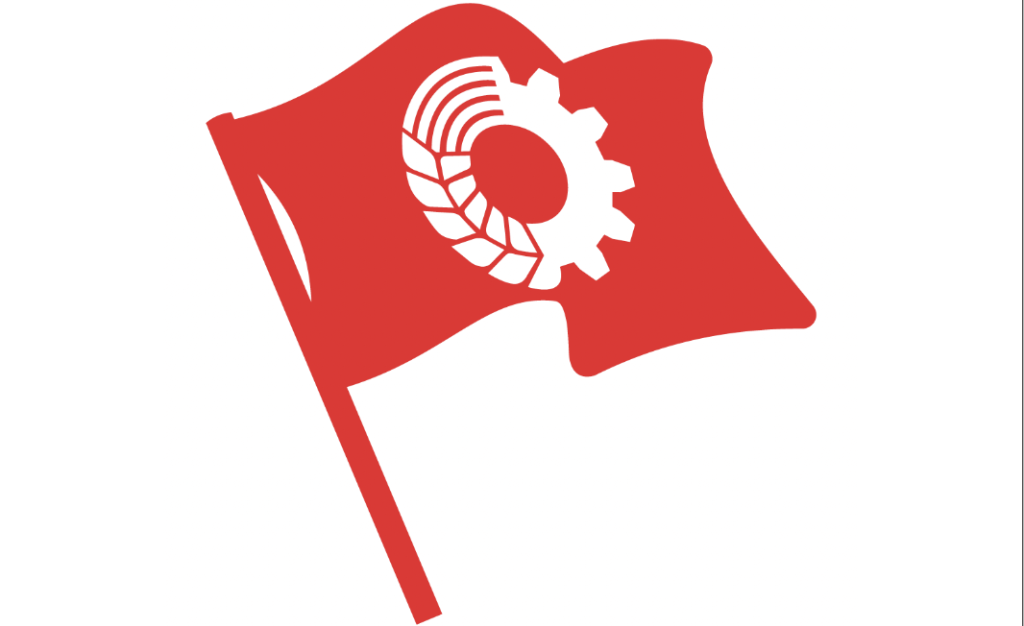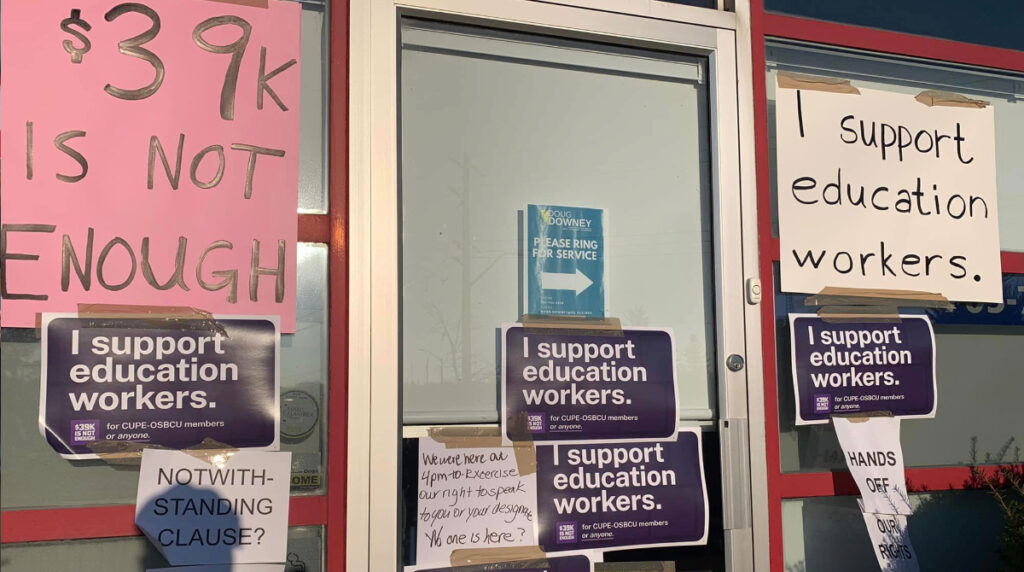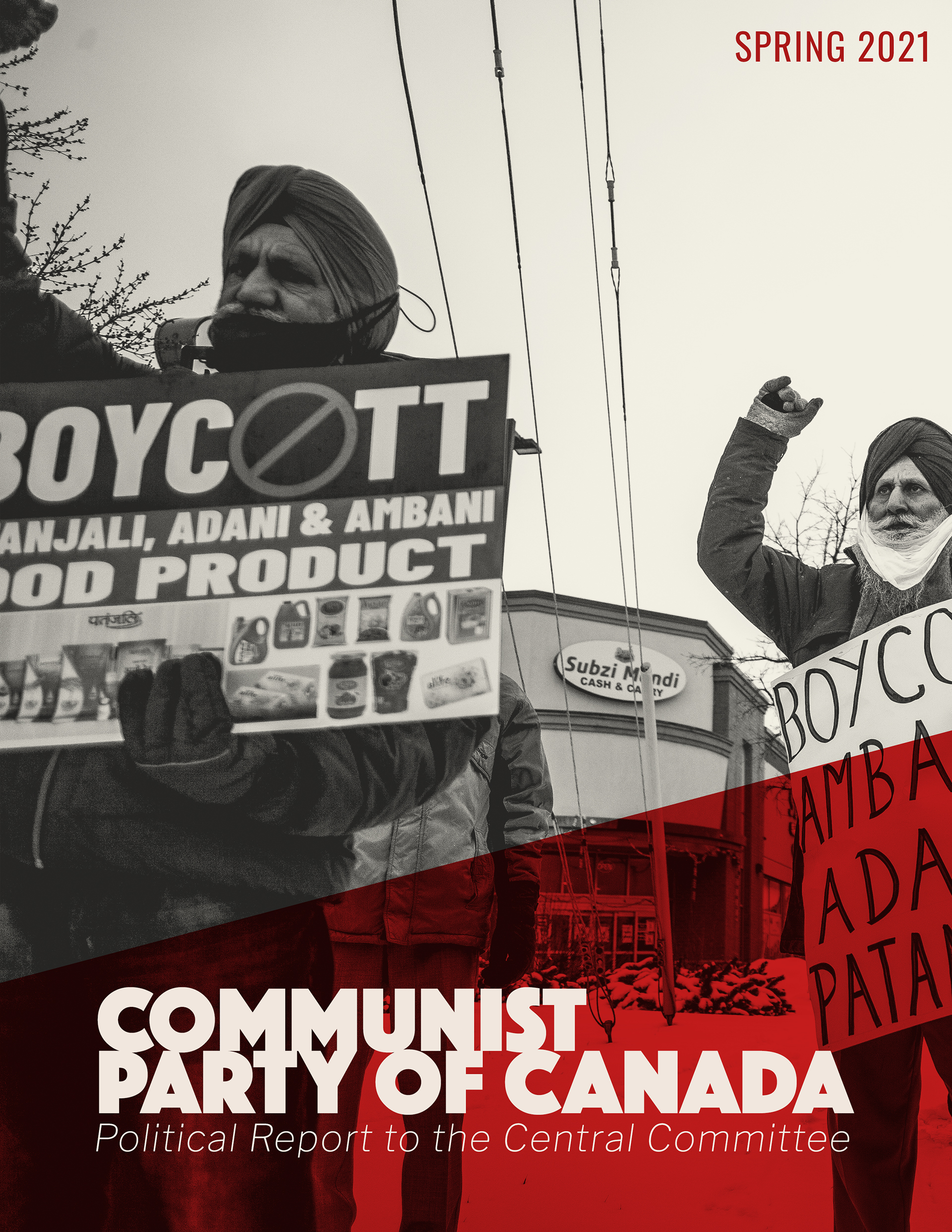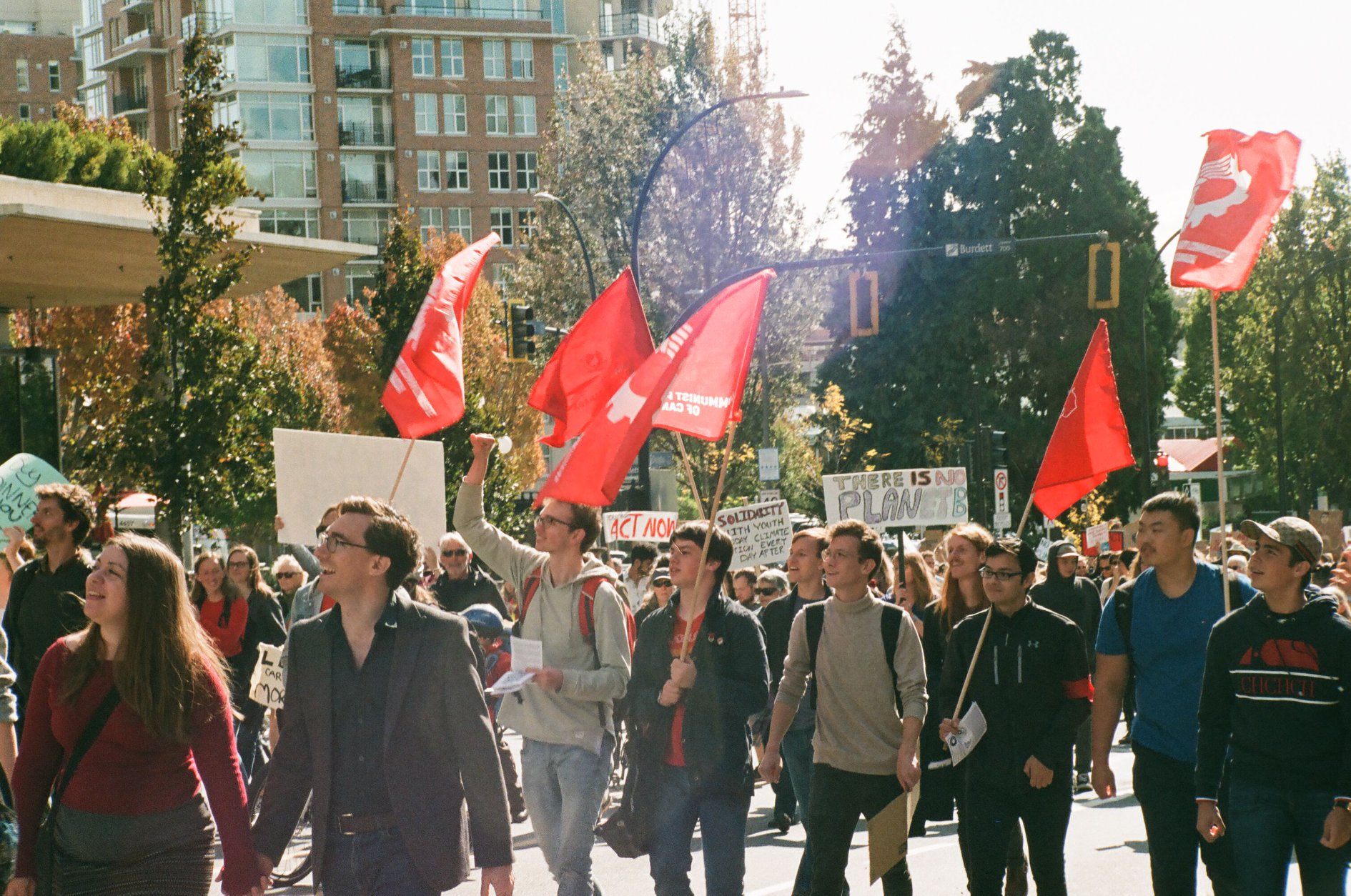Since the beginning of the 1800s, capitalism has spread across much of the world, revolutionising the economic basis and the social, political and ideological superstructure of society. The first stage of its existence was marked by the advance of democratic ideas and freedoms (at least for the rising capitalist class and, to a lesser degree, for other classes in some states), by the formation of national or multinational states, by industrialisation and urbanisation and by phenomenal increases in the forces of production.
The second stage from the late 1800s saw the rise of big corporations and trusts which between them came to monopolise entire sectors of national economies. State power was used to help these monopolies win access to markets and raw materials in other countries, with the export of capital from the main imperialist centres becoming a significant feature. By the beginning of the 20th century, almost the whole world had been carved up into colonies or spheres of influence between the capitalist monopolies and their respective states, notably Britain, France, Germany and the US. That’s why Lenin called this stage ‘imperialism – the highest and final stage of capitalism’. It is also a stage when capitalism becomes markedly more parasitic and moribund, making huge profits from socially useless or dangerous activities such as military production, financial and property dealing, advertising and debt enslavement.
Imperialism has itself passed through a number of distinct phases. The first was characterised by world wars between the major capitalist powers – some of which had turned to fascism – to re-divide the world. This phase, which lasted until the end of World War Two in 1945, also featured socialist revolution in Russia and a crippling economic depression throughout the capitalist world.
The second phase, from the 1940s until the 1990s, saw the stabilisation and restructuring of imperialism in a world where the construction of an international socialist camp led by the Soviet Union helped to secure welfare states in the West and the destruction of colonialism. In that second phase, too, we witnessed the rise of the industrial and financial transnational corporations, based in the developed capitalist countries and coming to play a major role in production and in international finance, investment and trade.
Capitalism has changed in many respects since the days of Marx and Engels, although its drive to global domination was anticipated and explained in the starkest terms by their Manifesto of the Communist Party back in 1848.
Even in its imperialist stage, capitalism in the 21st century still retains the fundamental characteristics of capitalism as a mode of production. What are these?
Firstly, the production of commodities – of products for sale in the market rather than for consumption by the producers or their master – is generalised. Capitalist society, Marx wrote, is an ‘immense accumulation of commodities’. We are surrounded by them, wearing them, sitting on them, writing with them and so on.
Secondly, the means of production – the industrial land and buildings, plant and machinery, tools, raw materials and energy inputs – are mostly in private ownership. Today, this takes the form of joint ownership by capitalists who are stockholders in industrial, financial and commercial corporations. They and their administrative representatives also control the pension and insurance funds to which workers contribute, and which are used to maintain capitalist enterprise.
Thirdly, a different class – the proletariat – works these means of production to produce society’s wealth. Capitalism has created this proletariat, which neither owns the means of production nor most of the wealth which it produces. It has to sell its capacity to work – its labour power – as a commodity in order to secure wages and social benefits on which to survive.
In Canada today employers, senior managers and proprietors (including the self-employed) comprise no more than 15% of the working population, with senior professionals another 5%. About four-fifths of the adult population are working class, i.e. dependent upon wages, benefits or state pensions for their livelihood.
In 2000, the richest one-tenth of the population (i.e. the capitalist class) owned half of society’s material wealth; the richest one-quarter (which would include those who help the capitalist class to govern the system) owned three-quarters; and the poorer half of the population owned just 6 per cent of the wealth.
One of Marx’s greatest achievements was to expose the exact process by which those who produce most of capitalist society’s wealth – who make the goods and perform the services – own and consume so little of it.
Under slavery, the exploitation of the slave class was open and based on the threat of brute force. Under feudalism, even the emancipated serf and peasant had to pay rent to the lord of the estate and were usually obliged to provide labour services for free.
But under capitalism, the exploitation of the working class is disguised by the wages system. Apparently, the worker freely enters into a contract with an employer to work for such-and-such a time, in return for the going rate of so much money per hour (or per item produced in the case of a piece-work payment system).
What Marx showed was that the worker is not paid in full for the work that they do – that the value of their wage is less than the value that they create for their employer. The truth of this contention is borne out by government statistics. For example, in the main production industries – mining and quarrying, energy, manufacturing and construction – in the UK in 2000, total output was valued at £618 billions. Of this, £379 billion represented the value of inputs used up in the production process (power, raw materials, components, wear and tear on tools and machinery etc.), while the new value added by the labour of the industrial workforce amounted to £239 billion.
Yet of this £239 billion created by the workers, only £ 140 billion – just over half -went back to them in the form of wages. The remainder of the value they created paid company tax bills (£5 billion) and provided employers with operating profits of £94 billion. This £94 billion would have been subsequently distributed between different sections of the capitalist class – dividends to shareholders, interest payments to the banks, rent to landlords – with possibly a small part helping to finance investment for expansion.
To put it another way, for the first four hours of a 7-hour day the average industrial worker creates value equivalent to that of their daily wage. But for the remaining three hours, they are working for free to create surplus value which goes to the capitalist class. This surplus value is the source of capitalist profit in general.
The worker’s wage will buy life’s necessities – housing, food, clothing, heating and some means of relaxation – which ensures that the worker is fit for work the next day. The wage may also help to sustain a partner (whose domestic labour might also contribute to the worker’s capacity to work) and to rear the next generation of labour power by having children.
The value of a commodity is measured by the amount of society’s labour time which goes into producing it, including the production of its inputs. What is the value of the capacity to work – the worker’s labour power – purchased by the employer? It can only be the value of the goods and services consumed by the worker and their dependants, which produces and reproduces that worker’s capacity to work – and which is therefore approximately equal to the value of the worker’s wage.
So the capitalist buys the worker’s labour time at its actual value. The other inputs bought by the employer are also bought at their value, which is then transferred into the final product during the production process. This past or transferred value does not increase. But here’s the secret revealed by Marx: new value is added by the workforce, including the time it spends transferring past value from the inputs. The capitalist has to pay for some of this new value in the form of wages – but not for all of it. As we have seen, the supplier of the labour power can work for 7 hours and thereby create 7 hours’ worth of new value, while only needing to consume four hours’ worth of value in order to live and work. Here is the unique characteristic of human labour power – unlike other inputs, its value expands during the production process. That, first and foremost, is why the capitalist class employs the working class – because only the current, living workforce creates surplus value for which the capitalist pays nothing.
Where does that leave administrative, distribution and commercial workers who are not directly engaged in the production of commodities – or public sector workers who provide services which are not sold in any commercial sense?
All workers in the private sector play a role in the provision of commodities, however indirectly. All commodities have to be sold, many have to be stored and transported and all these operations have to be administered. Likewise, public sector workers perform functions which are indispensable in a modern, complex society such as a capitalist one.
These workers, too, are exploited. Although they may be working for 7 hours a day, they will receive pay which only enables them to consume three or four hours’ worth of value. They are therefore performing surplus labour for no payment, as do workers directly involved in producing commodities. It is in the interests of the capitalist class to keep down costs (including taxes to fund public expenditure) and to squeeze more unpaid working time out of all categories of workers, whether or not they directly produce surplus value.
Conversely, it is in the interests of all workers to maintain and raise the value of their wages. This can rarely be done effectively on an individual basis, given the imbalance of power between employer and employee. Hence the need for collective organisation, collective action and solidarity. The wages struggle asserts the right of the working class to have control over the value and wealth which they produce, helping to weld them together in class organisations, raising their class consciousness (although there can be the tendency for this consciousness to be a narrow sectional one).
By its very nature, according to Marx, the capitalist work process tends to generate alienation among the working class. As producers whose product belongs to the employer, whose labour is increasingly broken down and subjected to the dictatorship of the manager and the machine, workers feel ‘alienated’ from their life-activity as creative beings. Ultimately, they feel alienated from capitalist society itself, although solace can be found in the human need to socialise in and especially outside work.
Although human labour power is the source of capitalist profit in general, it does not follow that all capitalists seek to employ as many workers as possible. Because the price of a commodity is determined largely by the average labour time (past and present) taken to produce it, across the whole sector, companies producing at below average cost will make extra profits at the expense of high-cost rivals. In effect, they are grabbing some of the surplus value created by the workforces of less efficient competitors.
Thus companies are always seeking to produce more cheaply than their competitors, whether through holding down wages, introducing new machinery or speeding up the pace of work. Across the whole economy, mechanisation proceeds apace as employers fight for a bigger market share. The proportion of capital invested in machinery grows, as the share going to wages declines. Yet it is this latter share, invested in the living workforce which alone creates surplus value, that the capitalist class as a whole reaps its profit. Employers therefore have to counteract this historical tendency for the rate of profit in the economy as a whole to fall, which they try to do by reducing the real value of wages, intensifying the work rate, reorganising the work process etc.
Locating new markets and sources of cheap labour and raw materials abroad assist capital in this endeavour, hence the drive to colonise and dominate other parts of the world.
Bringing fresh contingents into the army of labour – ones which can be exploited more intensively like young, women and immigrant workers – will also counteract the falling rate of profit, at least until those workers become organised to resist their super-exploitation. The divisions which can be created as cheaper workers undercut other sections of the working class play directly into the hands of the exploiters.
So employers strive to increase production in order to capture a bigger market share and make more profits (including for investment and expansion). At the same time, they are driving down the value of wages, which restricts the purchasing power of the largest class of consumers – the working class.
Hence the point is reached periodically when not all the commodities being produced can be sold at a profit. Orders for new machinery to increase output are cut back; workers in those sectors are laid off and their spending power diminishes. More commodities are unsold and, in turn, the workers who produce them are sacked. Soon the whole economy goes into a downward spiral. As workers resist, at least initially, the capitalist class and its mass media whip up potential divisions within the working class, identifying scapegoats and using the forces of the state against the labour movement.
In these cyclical crises of ‘over-production’ – which in past types of society would have been the cause for celebration – companies go to the wall, machinery is scrapped and public services are chopped. Bigger and stronger firms weather the storm until it becomes profitable to produce once more, utilising cheaper labour, cheaper credit and cheaper means of production.
In a modern, complex and intertwined capitalist economy, structural crises can also arise because of imbalances in supply and demand between key sectors, because of related price shocks to key inputs (e.g. oil or steel) or as the result of financial dealings such as the mugging of a currency or the collapse of a major bank or investment fund. Deeper and longer structural crises can occur when a whole industry goes into decline in a particular region or nation, perhaps as the result of intensified international competition. When deep and widespread enough, capitalist crisis can lead to war, as rival imperialist powers seek new markets or cheaper resources.
Thus capitalism squanders and periodically destroys society’s productive forces.
This illustrates the most fundamental contradiction in the capitalist mode of production: that between the forces of production – which are organised socially – and the relations of production, which are organised on the basis of private ownership and control.
The forces of production (i.e. the means of production, labour and technology) are drawn and combined together in a vast, complex process across the whole of society. But the relations of production, whereby one class owns the means of production and employs another class to work them, are based on the private and corporate property of a small minority.
Therefore, production is not organised primarily to meet the needs of the people or of society as a whole, but to maximise profit for shareholders and directors. Where it is more profitable to produce expensive weaponry than cheap and essential medicines, for example, capitalism will prefer to produce the weaponry.
Technology which could revolutionise production and consumption still further is not developed or fully applied because it would damage the profits of an individual company or a whole sector. The priorities for research and development – including vast investment in military technology – are dictated by the needs of big business, not by the needs of society. Moreover, incalculable damage is being done not just to the environment, but also to the eco-system of the earth itself, by the worldwide scramble for monopoly profit.
Of the over six billion persons on our planet, one billion are severely undernourished, more than two billion lack sanitation and safe water supplies and over a billion are illiterate or unemployed. Yet modern society’s productive forces, if planned and owned and developed by society as a whole, could already more than satisfy the basic food, shelter, education and health needs of the world’s entire population.
Now a new, third phase of imperialism is emerging which will intensify all these contradictions including the uneven development of capitalism, widening the gap between rich and poor on a global level. Its advocates – and some of its critics – call it ‘globalisation’. Although presented as some mysterious and inevitable development, it is in fact a strategy driven by the world’s most powerful capitalist monopolies and their states. Its primary economic goal is the unhindered penetration of every part of the world by monopoly capital, thus requiring the free movement of capital, the deregulation of labour and the privatisation of almost all public sector industries and services.
New international institutions such as the World Trade Organisation have been added to existing ones, such as the International Monetary Fund and World Bank, in order to drive through the necessary policies on a global scale. It should not be forgotten, however, that these institutions are dominated by the major imperialist states, namely the US, Japan, Britain, France and Germany (and not by ‘mysterious’ market forces or some anonymous international capitalist class).
Of course, the form of globalisation currently being imposed is not without its economic – let alone its profound political – contradictions. Competition and conflict between capitalist monopolies and their respective states has come out into the open since the collapse of the Soviet camp. Rival economic (and in the case of the European Union political) power blocs are being built in North America, Europe and the Asia-Pacific region.
Moreover, the power and freedom of the transnational corporations is causing growing problems in the developed capitalist countries as well as in the rest of the world. In Canada, for instance, the export of capital is severely eroding the country’s manufacturing base, while privatisation of essential services is proving to be grossly inefficient and – for working people at least – hugely expensive.
What we have here is, in fact, a growing contradiction between the economic, social and democratic requirements of national (or in Canada’s case multinational) states on the one side, and the processes of monopoly capitalist globalisation – driven by those very same states – on the other. At the national level, balanced economic and social development is increasingly difficult to achieve, while the goal of integrated transport and energy strategies has been all but abandoned in Canada and other advanced capitalist countries.
Naturally, the capitalist monopolies and their political and intellectual allies deny the existence of any such contradiction. Even where the existence of economic problems – if not their source – is admitted, they argue that individual nation-states are now powerless to counteract or solve these problems in the face of ‘free market forces’ and globalisation.
Yet the capitalist monopolies themselves still concentrate their political influence and power at the level of the national state. Why should it be accepted that states such as Canada can act as a powerful force for the interests of Canadian monopoly capital, and for Canadian imperialism to march in lockstep with US imperialism, but that the Canadian state has no potential to be transformed into a powerful instrument for the interests of the working class and peoples of Canada?
In the Communist Manifesto, Marx and Engels argued the need for the working class movement to take power at the national level (to ‘constitute itself as the nation’ and ‘win the battle for democracy’). This was essential in order to massively expand society’s productive forces by making deep inroads into the economic power of the capitalist class.
They proposed an outline programme of economic and social measures for such a workers’ government, which included state nationalisation of the land, banking and transport services; a heavily progressive income tax aimed at the rich; the abolition of inheritance rights; an equal obligation upon all to work; and planned improvement and cultivation of the soil and wastelands. Such an economic and social programme, Marx and Engels believed, would prepare the way for revolutionising society’s mode of production.
But first the working class has to fight for and take state power. For that, it needs allies, leadership and a strategy for socialist revolution.
Discussion Questions
- How do employers seek to (a) intensify and (b) disguise exploitation at work, and how can their efforts be challenged?
- Why and especially how does capitalism divide different categories of the working class – and how can this be countered?
- Suggest ways in which capitalism holds back the full development of modern society’s productive forces.
- Why is trade union militancy on wages, pensions and working conditions (a) vital and (b) not enough?
- Which economic measures today would be most practical and effective to begin making inroads into the economic and political power of the capitalist class?





 We write to add our voice to the 91% of Canadians who urge the government of Canada to introduce a universal, accessible, comprehensive and portable single-payer public prescription drug system by expanding the Canada Health Act to include prescription drugs dispensed outside hospital.
We write to add our voice to the 91% of Canadians who urge the government of Canada to introduce a universal, accessible, comprehensive and portable single-payer public prescription drug system by expanding the Canada Health Act to include prescription drugs dispensed outside hospital.